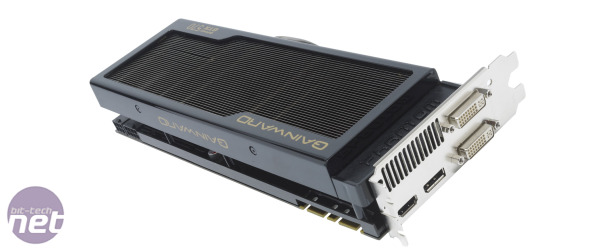
Performance Analysis
With only a 2.5 per cent pre-overclock on the core and memory clock speeds, the Phantom was never really going to demonstrate a significant improvement in performance over a stock GTX 570 1.3GB. Nevertheless, there were improvements, albeit mostly just 1 or 2fps extra to the average and minimum frame rates. Happily, though, the GTX 570 1.3GB is already a phenomenally fast card in its own right, which means the Phantom still sits well towards the top of our benchmarks.In Dirt 2 at 1,920 x 1,200 with 4x AA, the Phantom’s minimum of 78fps is 22 per cent faster than a stock GTX 560 Ti 1GB, so the extra cash really does land you a healthy chunk of extra performance.
It’s the same case in Just Cause 2, in which the Phantom’s minimum frame rate of 30fps at 1,920 x 1,200 with 4x AA is 20 per cent faster than the GTX 560 Ti 1GB.
In comparison to the HD 6970 2GB, the equivalent-price AMD card, the Phantom is impressive, and while the two cards are neck and neck with 0x AA, enabling 4x AA sees the Phantom pull ahead. For example, in Bad Company 2 at 1,920 x 1,200 with 4x AA the Phantom had a minimum frame rate of 45fps, close to 30 per cent faster than the HD 6970 2GB.
While the Phantom’s performance is only marginally superior to a stock GTX 570 1.3GB, it’s power consumption both when idle and under load is noticeably higher. When idle the system power draw was 163W -13W more than even a GTX 580 1.5GB. When under load the system power draw jumped to 364W - 1W more than a GTX 580 1.5GB in the same circumstances.
Thankfully the triple-slot, three fan cooler was up to dealing with the increased power consumption, keeping the GPU running 16°C above ambient when idle and 46°C above ambient under load. This is an improvement of 10°C over a stock GTX 570 1.3GB, and the card remained whisper quiet throughout, even when the fans spun up to 1,800rpm under load.
Click to enlarge
Overclocking
With all the extra power delivery circuitry on the Phantom, we suspected it might be an impressive overclocker, so we fired up Gainward’s own ExperTool overclocking utility and started sliding those clock speeds higher. Eventually we reached a stable overclock with an 825MHz core, 1,650MHz stream processors and 1,050MHz (4.2GHz effective) memory, increases of 12, 12 and 10 per cent over stock respectively. Needless to say, these are much more worthwhile overclocks than the measly 2.5 per cent you get out of the box, and the core clock far surpasses the 770MHz we've achieved with a stock GTX 570 in the past.Overclocking saw performance at 1,920 x 1,200 with 4x AA improve accordingly, with the minimum frame rate in Dirt 2 rising from 78fps to 85fps, while the average frame rate in Just Cause 2 climbed from 46fps to 48fps. This puts the Phantom only marginally behind the GTX 580 1.5GB.
Conclusion
Graphics card partners have been handed a great opportunity with Nvidia’s latest round of GPUs, as it’s pretty hard to build a poor card around such a good GPU. Gainward certainly seems to be taking advantage, as the Phantom is a great example of a GTX 570 1.3GB. While the factory pre-overclock is measly, performance does improve marginally, but it’s the custom cooler that’s most useful here.Not only does it make the Phantom run cooler than a standard GTX 570 1.3GB, but it remained very quiet indeed throughout testing. Combined with the somewhat less efficient, but undoubtedly beefed up power circuitry, this makes the Phantom a very capable overclocker. Pricing for GTX 570 1.3GB cards hovers around the £290 mark for stock versions, so a custom-cooled, custom-PCB version for £15 more is a very fair price. While the more price-conscious should still consider a GTX 560 Ti 1GB first, the Phantom is a great choice for those looking at the next notch up in performance.
- Performance
- x
- x
- x
- x
- x
- x
- x
- x
- x
- -
- 9/10
- Features
- x
- x
- x
- x
- x
- x
- x
- x
- x
- -
- 9/10
- Value
- x
- x
- x
- x
- x
- x
- x
- x
- -
- -
- 8/10
- Overall
- x
- x
- x
- x
- x
- x
- x
- x
- -
- -
- 8/10

Gainward GTX 570 Phantom 1.3GB

MSI MPG Velox 100R Chassis Review
October 14 2021 | 15:04









Want to comment? Please log in.